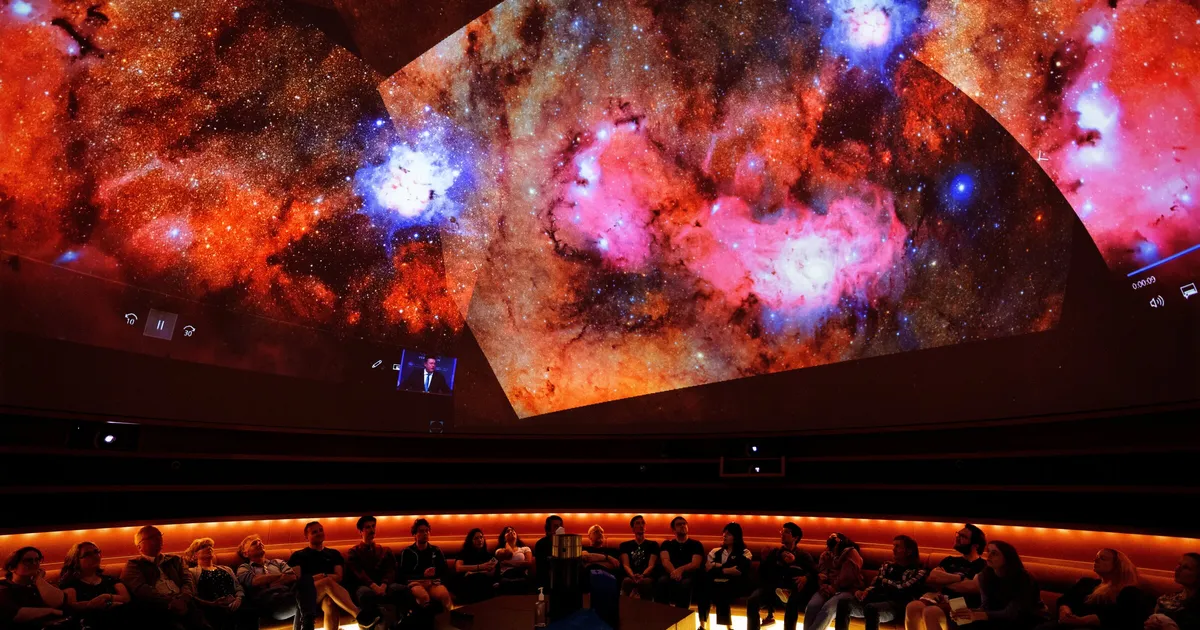
Viewing never-before-seen wonders of the night sky at UW watch party
How did your country report this? Share your view in the comments.
Diverging Reports Breakdown
University of Washington event unveils new wonders of the night sky
The Vera C. Rubin Observatory in Chile is expected to revolutionize the field of astronomy. The observatory hopes to image 20 billion galaxies and discover new asteroids and other celestial objects. The massive camera can detect a broad wavelength of colors that are used to estimate distance. The Rubin Observatory can see more than 10 million light years away, with each dot being millions of objects.“We want to contribute to a range of big scientific questions that we don’t have the answer to yet,” said Mario Juric, an astronomy professor and the principal investigator of UW’s Rubin Observatory team.
Those watching the images of nebulas and galaxies spreading above them in UW’s planetarium were part of a global watch party for the unveiling of the Vera C. Rubin Observatory in Chile. UW was one of the project’s four founding members, and about half of the attendees at the Seattle watch party had worked on the observatory.
The official unveiling, beamed throughout the world, took place in Washington, D.C., and was largely presented by UW professor Željko Ivezić.
The observatory’s first look featured the vibrant Trifid and Lagoon nebulas located thousands of light-years from Earth. A light-year is nearly 6 trillion miles. A gaggle of galaxies known as the Virgo Cluster were also captured, including two bright blue spirals.
“This is the coolest thing I will ever get to experience. It will set the trajectory for the rest of my career,” said UW undergraduate Sam Charney as he watched the images.
Advertising
The massive camera can detect a broad wavelength of colors that are used to estimate distance. The Rubin Observatory can see more than 10 million light years away, with each dot being millions of objects.
The observatory hopes to image 20 billion galaxies and discover new asteroids and other celestial objects.
“We want to contribute to a range of big scientific questions that we don’t have the answer to yet,” said Mario Juric, an astronomy professor and the principal investigator of UW’s Rubin Observatory team responsible for mapping the solar system.
“One of the things we want to learn is how the solar system was created, how many planets were there in the beginning, where did planets form in the solar system, and how they got to their present place. All these are questions that we can answer with this telescope,” he said.
U.S. Energy Secretary Chris Wright said in a prerecorded video that Monday’s event represents “an accumulation of two decades of scientific and technological innovation that has given us the ability to look into the cosmos and understand our universe.”
Funded by the U.S. National Science Foundation and U.S. Department of Energy, the Rubin Observatory will survey the southern sky for the next 10 years. Charney, the UW student, expressed concern for the observatory’s future after recent budget cuts to the NSF and National Aeronautics and Space Administration.
On Monday, Juric was looking toward the future. “This is really just the beginning,” he said. “We’re celebrating the first of many pictures”
The Associated Press contributed to this article.
